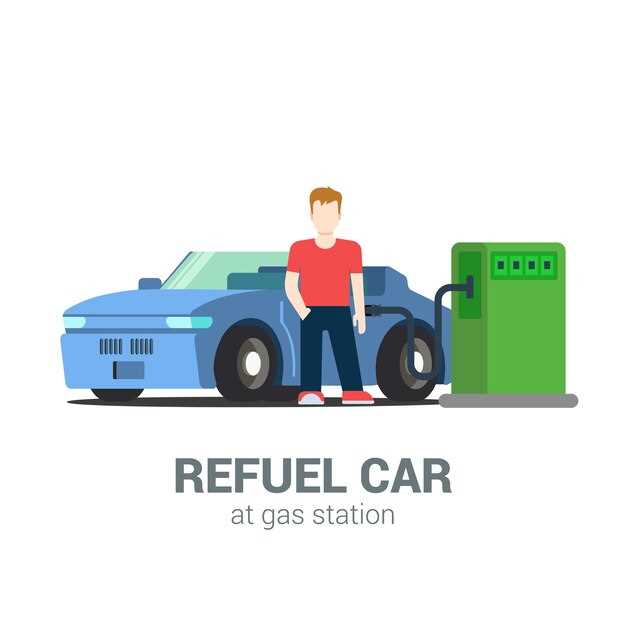
Understanding the vital role of your car battery is essential for any vehicle owner. The battery is not just a power source; it is the heart of your car’s electrical system, providing the necessary energy for starting the engine and powering various electronic components. As the battery ages, it can exhibit specific signs indicating it may soon require replacement.
Recognizing these signs early can save you from unexpected breakdowns and costly repairs. A failing battery can lead to a variety of performance issues that may affect your driving experience. In this article, we will explore the most common indications that your car battery is nearing the end of its life, ensuring you stay informed and proactive in maintaining your vehicle.
From sluggish starts to warning lights on your dashboard, understanding these symptoms will empower you to take appropriate action. By being aware of these signs, you can avoid the inconvenience of being stranded and ensure your vehicle runs smoothly. Let’s delve into these critical indicators that may suggest it’s time to consider a battery replacement.
Unresponsive Electrical Components When Starting the Engine

One of the most telling signs that your car battery may be on the verge of failure is the unresponsiveness of electrical components when you attempt to start the engine. If the dashboard lights flicker or fail to illuminate at all when you turn the key, this is a strong indicator that the battery is unable to provide sufficient power.
Additionally, the vehicle’s power windows, radio, or other electrical accessories may also show signs of sluggishness or complete inactivity. When you notice these issues, it suggests that the battery’s voltage is too low to support multiple systems simultaneously. A healthy car battery should be able to power these components without noticeable delay or failure.
If you experience a situation where headlights dim significantly or do not turn on when trying to start the engine, this further emphasizes a potential battery problem. In some cases, the engine may not crank at all, and you may hear a clicking noise instead. This clicking sound is the starter relay attempting to engage but failing due to insufficient power from the battery.
Prompt attention to these electrical malfunctions is crucial, as they can indicate a deteriorating battery that may leave you stranded. Testing the battery’s voltage and overall condition can help you assess whether a replacement is needed before it fails completely.
Frequent Dashboard Warning Lights Indicating Battery Issues

When it comes to maintaining your vehicle, paying attention to dashboard warning lights is crucial. Several indicators can suggest that your car’s battery may be on the verge of failure. If you notice any of these warning lights frequently illuminating, it might be time to assess your battery’s health.
The battery warning light is the most direct signal that something is wrong. When this light activates, it often indicates that there is a problem with the battery itself, the alternator, or the electrical system. Ignoring this warning can lead to a complete power failure.
Another common indicator is the check engine light. While this light can signify various issues, a failing battery can sometimes be the culprit, particularly if there’s a drop in voltage affecting your vehicle’s electronic systems.
If you observe the electrical system warning light, it specifically points to problems in the electrical circuits, often connected to a bad battery or alternator. An illuminated electrical system light warrants immediate investigation to avoid further complications.
Additionally, dash lights indicating low voltage may appear, suggesting that your battery isn’t adequately holding a charge. Consistent low voltage readings can affect the performance of various electronic components, including lights, air conditioning, and other critical systems.
In summary, if you frequently encounter any of these dashboard warning lights, it is important to have your battery inspected. Addressing battery issues promptly can help you avoid being stranded and ensure your vehicle runs smoothly.
Physical Indicators of Battery Wear and Corrosion
One of the most apparent signs that your car battery may need replacement is the presence of physical wear and corrosion. The condition of the battery terminals, cables, and the battery case itself can provide critical insights into its health.
Corrosion typically appears as a white, ashy substance around the battery terminals. This buildup occurs when the battery leaks acid or when the terminals are not properly secured, causing a reaction with moisture. If you observe a significant amount of corrosion, it can interfere with the battery’s electrical connections, leading to poor performance and starting issues.
Inspect the battery cables for fraying or cracking. Damaged cables can impede the flow of electricity, further stressing the battery. Make sure the clamps that connect the battery cables to the terminals are tight and free of rust. Loose or corroded clamps can lead to intermittent electrical issues, and replacement of the battery may be necessary soon.
The physical condition of the battery case itself should also be examined. Any signs of swelling, cracks, or leaks can indicate that the battery is nearing the end of its lifecycle. A swollen battery can indicate that it is overcharging or experiencing internal failure. If the battery has visible leaks, it is essential to replace it immediately to avoid damage to surrounding components.
Regular inspections of these physical indicators can help identify when your car battery may need replacement, ensuring reliable vehicle performance and preventing unexpected breakdowns.





